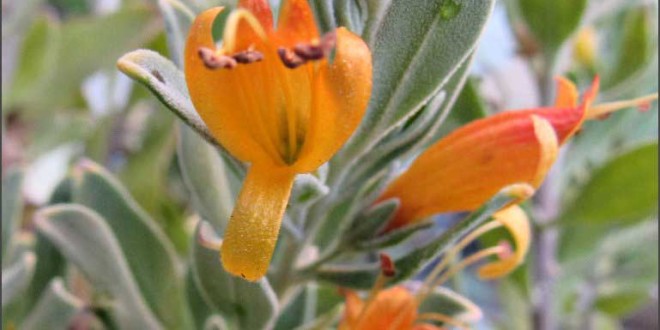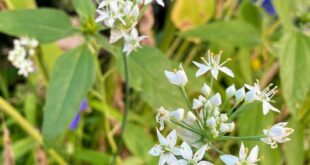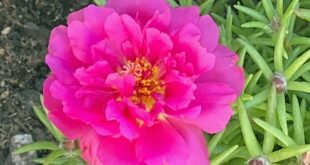Emu Bush is a great addition to a drought-tolerant garden in Sunnyvale. Emu Bush Fuchsias (genus Eremophila) are Australian shrubby native plants and there are over two hundred varieties known. The name Eremophila means ‘desert lover’ and derives from the Greek eremos (desert) and phileo (to love).
The fruits are eaten by emus, which disperse the seeds in their droppings. Note: Emus not included
Eremophila includes species with flowers adapted to attract insects and other species with flowers that attract birds. Entomophilous flowers have protruding lower lips, which provide a landing area for insects, and they are often blue, purple, or white. Bird-adapted flowers are red, orange, yellow, or green, and have lobes pointing downwards to discourage insects. They also tend to have longer stamens, which brush pollen on birds’ heads as they feed.
Most Eremiphilas have tubular fuchsia-like flowers in a variety of colours from orange to lilac and from mauve to blue, and many species are highly ornamental with grey or even white foliage to contrast with the beautiful floral displays. Many Eremophilas are small to medium shrubs, sub-shrubs, small trees or ground covers that flower mainly in the spring and autumn seasons with others throughout the summer.
Western Australia has the largest habitats of Emu Bush in Australia, and as these plants are not subject to many pests or diseases and are low maintenance, they are superb garden plants. Some like Eremophila maculata grow up to around 2 meters and is suitable even as an informal hedge.
They can be propagated relatively easy from cuttings which strike readily. Cuttings should be taken during or just after flowering and nurtured in bright, warm sheltered conditions.
Pruning should be undertaken once a year after flowering to provide a dense, all round good shape and encourage new fresh growth. They are tolerant of sandy soils to clay, but with the latter, will need good drainage.
They do however require full sun and when planting, ensure some organic matter is mixed with sandy soils and water frequently after planting, especially in hot spells. They can be fertilized using a slow release fertilizer for native plants.








